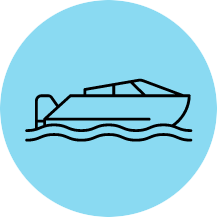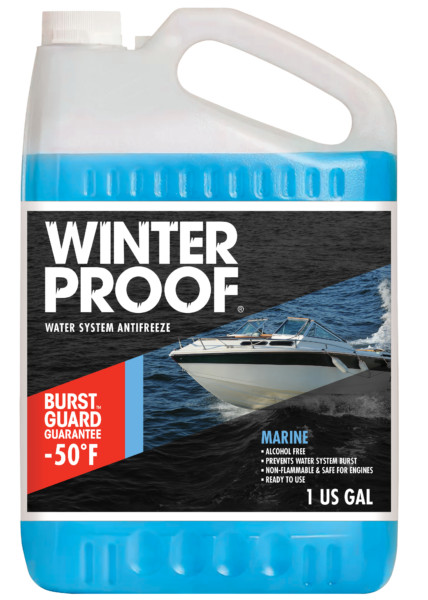It’s smooth sailing with WINTERPROOF™ Marine Water System Antifreeze – now formulated specifically for boats. Keep your waterlines and heaters protected through harsh winters, and ready for the open water ahead.
Trust WINTERPROOF™
- Complete water system protection.
- Alcohol free, non-flammable formula.
- Prevention of burst waterlines.
- Safe for engines.
- Safe for use on plastic and metal pipes.
- Inhibits rust & corrosion in metal pipes.
- Keeps waterlines, pipes, and seals lubricated.
- Specialized, ready to use formula.
Product Specifications
| Item # | Unit/Case Pack | UPC | SCC14 |
|---|---|---|---|
| 35-364WPUS/13147 | 4 x 1 USG | 056438909545 | 40056438909543 |
| 35-365WPUS/13148 | 2 x 2.5 USG | 056438909552 | 40056438909552 |
| 35-369WPUS/13149 | 4 x 55 USG | - | - |
| 35-369WPUS-275/13150 | 1 x 275 USG | - | - |


